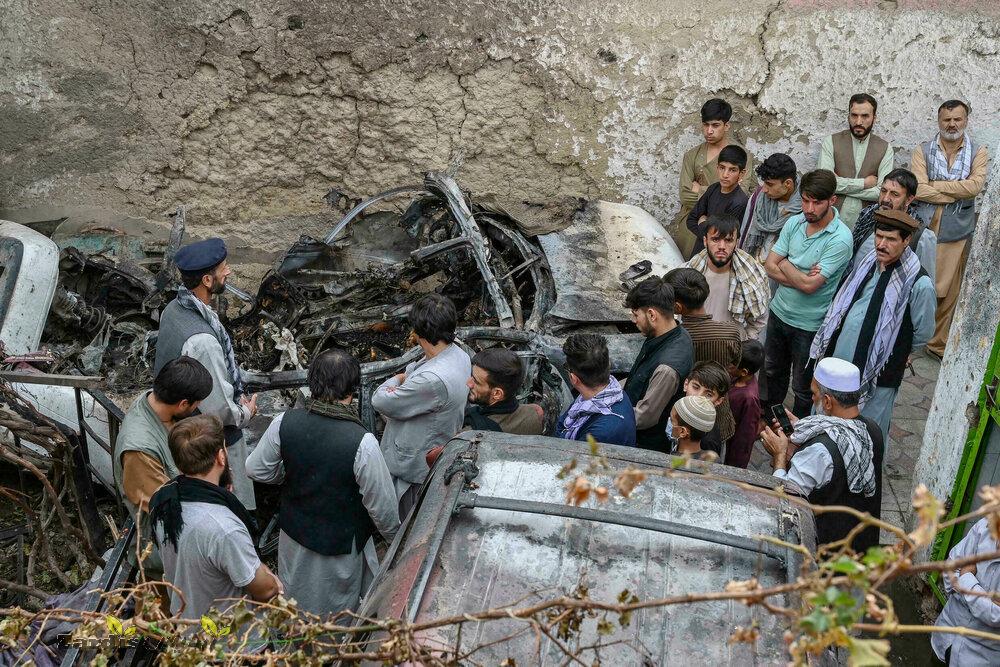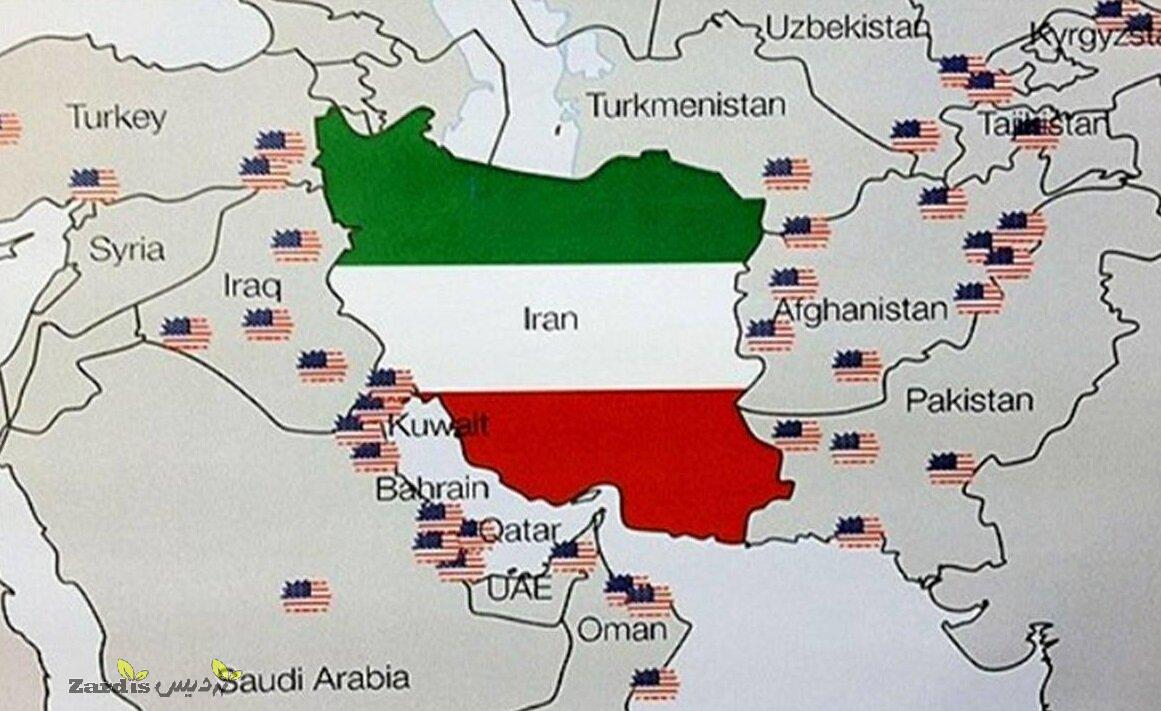TEHRAN- In another blow to image of U.S. intelligence, an investigation by the New York Times has shed doubt on Washington’s narrative that it targeted Daesh operatives in revenge for an earlier deadly attack at Kabul airport.
Video analysis shows the U.S is likely to have struck an “aid worker” rather than Daesh terrorists in its final strike in Afghanistan which also killed 10 civilians.
The Pentagon had claimed, on August 29, it disrupted a new attack planned by the Daesh terror group through a Reaper drone strike. That was one day before U.S. troops ended their 20-year occupation and followed a deadly incident outside the airport where vast crowds rushed to leave the victorious Taliban.
But Kabul resident Aimal Ahmadi earlier told media outlets that the strike killed 10 civilians including his small daughter, nephews, nieces and his brother Ezmarai Ahmadi, who was driving the car that was struck after he parked the vehicle.
Now, the New York Times, analyzing security camera footage, says the U.S. military may have been seeing the slain Ahmadi and a colleague loading canisters of water, which was in short supply after the collapse of the former government, and picking up a laptop for his boss.
Friends and relatives say Ezmarai Ahmadi was an electrical engineer for the California-based aid and lobbying group Nutrition and Education International and himself was among thousands of Afghans who had applied for resettlement in the United States.
U.S. officials allege that a larger explosion took place after the drone strike, claiming that there were explosives in the vehicle.
But the New York Times investigation said there was no evidence of a second explosion, with only one dent on a nearby gate and no clear signs of an additional blast such as blown-out walls.
Aimal Ahmadi earlier told AFP that 10 civilians were killed while U.S. officials have acknowledged three civilians had been killed but claimed that the strike prevented another deadly attack.
Commenting on the New York Times report, Pentagon spokesman John Kirby said that U.S. Central Command “continues to assess” the strike but claims “no other military works harder than we do to prevent civilian casualties.”
“As Chairman (Mark) Milley said, the strike was based on good intelligence, and we still believe that it prevented an imminent threat to the airport and to our men and women that were still serving at the airport” Kirby said, referring to the top U.S. general.
The New York Times noted that a rocket attack the following morning, claimed by the Daesh Takfiri group, was carried out from a Toyota Corolla similar to Ahmadi’s.
Hundreds of thousands of Afghan and Pakistani civilians have died directly from the war launched by the United States after the September 11, 2001 attacks.
According to a Brown University study in April, casualties rose dramatically after then President Donald Trump relaxed rules of engagement in 2017.
As the United States departed the country after 20 years, it has not exactly left behind the best of legacies.
According to the World Food Program (WFP) 93-percent of Afghan families are not consuming sufficient food, the World Food Program says three out of four households are using extreme coping mechanisms, such as skipping meals or preferring to give food to children instead of adults.
The WFP conducted a telephone survey from June 17 to September 5, asking 1,600 random households per month about their food habits. The agency reported a “marked difference” between the period up to the 15th of August and then following the 20th of August.
The WFP’s deputy regional director for Asia and the Pacific, Anthea Webb, says “the portion of families resorting to extreme coping mechanisms, those are things like skipping meals or preferring to give food to children instead of adults or limiting portion’ sizes to make food last longer had almost doubled”,
Afghanistan is facing economic collapse after foreign countries and institutions said they would withhold aid and monetary reserves after the Taliban retook control of the capital Kabul on August 15.
“It’s now a race against time and the snow to deliver life-saving assistance to the Afghan people who need it most. We need to be reaching 9 million people per month by November if we are to meet our planned target of 14 million by the end of the year” Webb says, urging donors to fill the 200 million dollars’ appeal ahead of an international aid conference for Afghanistan on September 13.
Many Afghans were struggling to feed their families amid severe drought well before the Taliban seized power last month and millions may now face starvation with the country isolated and the economy unraveling, aid agencies say.
According to the WFP, food prices have spiked since the second drought in four years ruined some 40% of the wheat crop.
Webb says “people do not have access to the money they need to buy food, food’s prices have gone up, and fuel prices have gone up. There simply is an inability for the poorest people and very soon the not so poor people to be able to buy enough food to survive”.
Malnutrition already affects one in two children under the age of five in Afghanistan, where 14 million people or one-third of the population faces “acute food insecurity,” the WFP says.
The World Food Program’s latest assessment says that 15 of Afghanistan’s 34 provinces showed less food consumption in the last month, the worst-hit being Ghazni, Khost, and Paktika in the country’s east.
Meanwhile, UN Secretary-General Antonio Guterres has appealed for an injection of cash into Afghanistan to avoid an economic meltdown that would spark a “catastrophic” situation for the Afghan people and be a “gift for terrorist groups.”
His remarks come after his special envoy on Afghanistan, Deborah Lyons, warned the Security Council that the freezing of billions of dollars in international Afghan assets to keep them out of Taliban hands would inevitably spark “a severe economic downturn.”
Speaking to reporters Guterres said “at the present moment the UN is not even able to pay its salaries to its own workers. We need to find ways to avoid a situation that would be catastrophic for the people and, in my opinion, a source of instability, and an action, gift for terrorist groups still operating there”
Al-Qaeda and a Daesh affiliate as well as other terrorist groups have a presence in Afghanistan.
Initially Washington claimed the Taliban had given Al-Qaeda a safe haven, using that as a pretext to invade the country, but the U.S. occupation has given birth to many other terrorist groups.
Guterres said he had been speaking with International Monetary Fund chief Kristalina Georgieva, telling reporters it was essential to agree on waivers or mechanisms to get money into Afghanistan. The IMF has blocked the Taliban from accessing some $440 million in new emergency reserves.
The United Nations is working to ensure it can continue its humanitarian work in Afghanistan, where at least 18 million people, half the country’s population, already need help.
Guterres added “we are permanently engaging with the Taliban and we believe that the dialogue with the Taliban is absolutely essential at the present moment”.
Much of the Afghan central bank’s $10 billion in assets are also parked overseas, where they have been frozen by the United States, since the Taliban came to power last month, and are considered a key instrument for the West to pressure the group.
Critics say Washington is punishing the entire Afghan population by freezing the country’s assets because of its embarrassing defeat and exit from the country.
It’s not exactly the liberation, freedom and prosperity America pledged to provide the people of Afghanistan when it invaded the country in 2001.
- News code 31958
- 244 View
- بدون نظر
Zardis news | The latest news of Iran and the world
تمامی حقوق مطالب برای Zardis news محفوظ است و هرگونه کپی برداری بدون ذکر منبع ممنوع می باشد.
طبق ماده 12 فصل سوم قانون جرائم رایانه ای کپی برداری از قالب و محتوا پیگرد قانونی خواهد داشت.
طراحی و اجرا: سامانه سایت ساز زردیس







